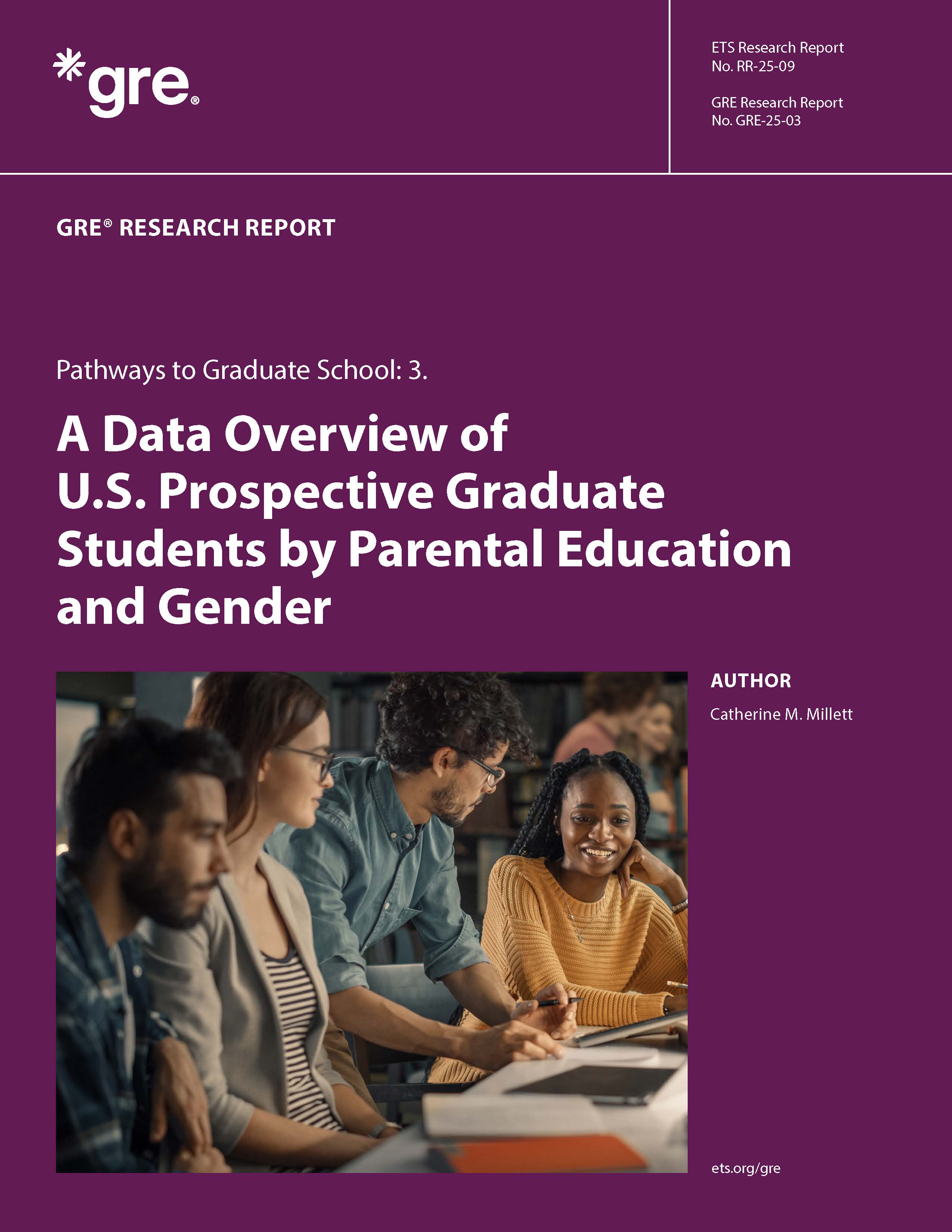Pathways to Graduate School: 3. A Data Overview of U.S. Prospective Graduate Students by Parental Education and Gender
DOI:
https://doi.org/10.64634/zdwwc433Keywords:
parent education level, graduate school applications, test measures, GRE®, prospective graduate students, demographics, work experience, undergraduate experience, graduate enrollment, graduate programAbstract
Having parents with higher educational attainment is associated with many positive academic outcomes for students (e.g., college enrollment, degree attainment). This study aims to raise awareness and promote understanding of the characteristics, aspirations, and graduate degree intentions of students who are considering graduate school, particularly through the lens of parental education and gender. Three distinct groups are profiled: no parent bachelor of arts (BA), one parent BA, and one parent BA+. The 980,903 individuals who are U.S. citizens, provided gender and parent educational attainment information, and had scores on all three GRE® General Test measures are the subjects for this descriptive study, one of a series of five such reports. GRE General Test data from July 1, 2016, to June 30, 2021, supplemented with U.S. Department of Education and U.S. Census data, are analyzed. These individuals, referred to as prospective graduate students (PGS), are examined through six core questions: (a) Who were the PGS? (b) Where did they reside? (c) What were their education and work experiences? (d) What were their undergraduate experiences? (e) What were their plans for graduate study? and (f) What were their emerging graduate school choice sets? Key findings include the following: (a) The percentage of White PGS increased as parental education increased; (b) more than 50% of PGS from all three parental education groups live in 10 states; (c) Federal Pell Grant eligibility decreased as parental education increased; (d) approximately half of PGS in each parental education group majored in a science, technology, engineering, or mathematics field, with notable gender differences; (e) more than 90% of PGS across all parental education groups reported a B or higher undergraduate major grade point average; (f) a master’s degree was the most common degree objective among all three parental education profiles; (g) most PGS were considering attending at least one graduate school in their home state; and (h) 41% of PGS included at least one minority-serving institution in their graduate school choice sets. The report concludes with recommendations for future research and practical applications, particularly in the graduate school application process.
Suggested citation: Millett, C. M. (2025). Pathways to graduate school: 3. A data overview of U.S. prospective graduate students by parental education and gender (Research Report No. GRE-25-03). ETS.

Downloads
Published
Issue
Section
License
Copyright (c) 2025 Educational Testing Service

This work is licensed under a Creative Commons Attribution-NonCommercial-NoDerivatives 4.0 International License.

